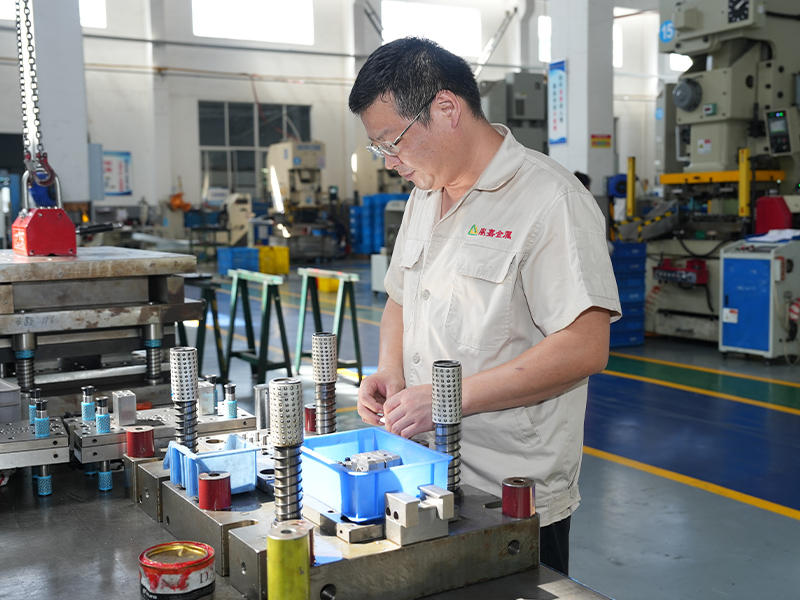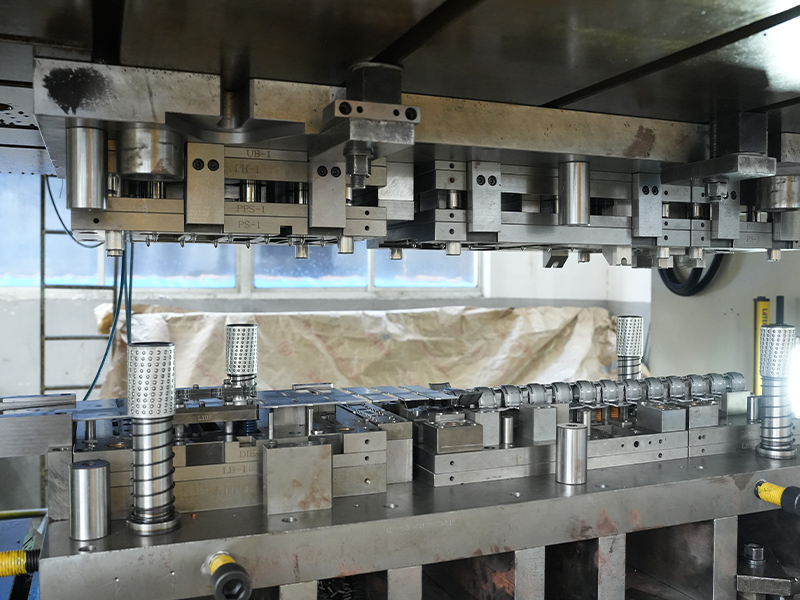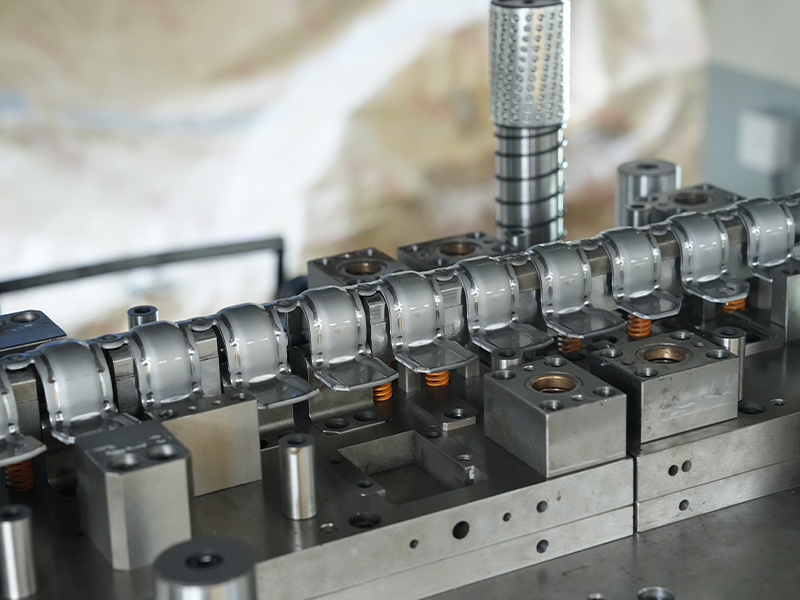What Are Iron Stamping Parts?
Iron stamping parts are metal components manufactured through a precision stamping process that shapes flat iron sheets into desired forms. This cost-effective manufacturing method is widely used in industries requiring durable, high-volume metal parts with tight tolerances. The process involves dies and presses to cut, bend, or form iron into specific shapes.
These components range from simple washers to complex automotive brackets. Cold-rolled steel, galvanized iron, and stainless steel are common materials used in precision metal stamping processes. The versatility of iron stamping makes it suitable for various industrial applications where strength and reliability are crucial.
Key Advantages of Iron Stamping Components
High Strength and Durability
Iron stamped parts offer exceptional mechanical properties including high tensile strength and impact resistance. This makes them ideal for heavy-duty industrial applications where components must withstand significant stress and wear.
Cost-Effective Mass Production
The stamping process allows for high-volume production with minimal material waste. Once the dies are created, manufacturers can produce thousands of identical parts quickly, reducing per-unit costs significantly compared to machining or casting methods.
Precision and Consistency
Modern progressive die stamping techniques can achieve tolerances within ±0.005 inches, ensuring part-to-part uniformity critical for assembly operations. This level of precision is difficult to match with alternative manufacturing methods.
Design Flexibility
Iron stamping accommodates complex geometries including bends, flanges, holes, and embossed features in a single operation. This eliminates multiple machining steps and simplifies assembly processes.
Common Applications of Iron Stamped Parts
Automotive Components
The automotive industry extensively uses custom iron stampings for brackets, chassis parts, engine components, and electrical system parts. Their high strength-to-weight ratio improves vehicle performance while maintaining safety standards.
Electrical and Electronics
Transformer cores, motor laminations, and electrical enclosures often utilize precision-stamped iron parts due to their magnetic properties and durability in electrical applications.
Industrial Machinery
Heavy equipment manufacturers rely on durable metal stampings for gears, couplings, and structural components that must endure harsh operating conditions without failure.
HVAC Systems
Ductwork, vents, and mounting brackets in heating and cooling systems frequently incorporate galvanized iron stampings for corrosion resistance and structural integrity.
Consumer Appliances
From washing machine drums to oven components, iron stampings provide the necessary durability for long-lasting appliance performance.
The Iron Stamping Manufacturing Process
Material Selection
Choosing the right iron alloy is critical for high-performance stampings. Common options include:
- Low-carbon steel (excellent formability)
- Galvanized iron (superior corrosion resistance)
- Silicon steel (electrical applications)
- Stainless steel (hygienic or decorative uses)
Tool and Die Design
Precision tooling is designed using CAD software and manufactured from hardened tool steel. Progressive dies may incorporate multiple stations to perform several operations in sequence as the metal strip feeds through the press.
Stamping Operations
The primary metal forming techniques include:
- Blanking (cutting the outline)
- Piercing (creating holes)
- Bending (forming angles)
- Drawing (creating deep forms)
- Coining (high-precision detailing)
Secondary Processes
Many iron stampings undergo additional treatments:
- Powder coating or painting for corrosion protection
- Plating for enhanced conductivity or appearance
- Heat treatment to improve mechanical properties
- Deburring to remove sharp edges

Quality Control in Iron Stamping
Reputable manufacturers implement rigorous quality assurance measures throughout production:
Dimensional Inspection
Coordinate measuring machines (CMM) and optical comparators verify critical dimensions against engineering specifications. Statistical process control tracks variations over production runs.
Material Testing
Spectrographic analysis confirms alloy composition while hardness testing ensures proper material properties. Tensile tests may be performed on sample parts.
Surface Quality Checks
Visual inspections and surface roughness measurements verify finish requirements. Eddy current testing can detect subsurface flaws in critical components.
Functional Testing
Assembly trials and load testing validate performance under simulated operating conditions for high-reliability stampings.
Choosing an Iron Stamping Supplier
Selecting the right manufacturer for your custom metal components requires careful evaluation:
Production Capabilities
Assess press tonnage, maximum part size capabilities, and secondary service offerings. Look for experience with similar parts in your industry.
Quality Certifications
ISO 9001 certification demonstrates commitment to quality systems. Industry-specific certifications (IATF 16949 for automotive) may be required.
Engineering Support
Strong design-for-manufacturability expertise can optimize your parts for cost-effective production while meeting performance requirements.
Prototyping Services
Rapid prototyping allows testing and refinement before committing to production tooling. Evaluate lead times for sample parts.
Supply Chain Reliability
Consistent material sourcing and production capacity ensure on-time delivery for your metal stamping needs.
Future Trends in Iron Stamping Technology
Advanced Materials
Development of high-strength, lightweight iron alloys will expand applications in automotive and aerospace while maintaining structural integrity.
Smart Manufacturing
IoT-enabled presses with real-time monitoring will improve process control and predictive maintenance for precision stamping operations.
Sustainable Practices
Increased use of recycled materials and energy-efficient processes will reduce the environmental impact of metal stamping production.
Hybrid Processes
Combining stamping with additive manufacturing or laser cutting will enable more complex geometries and functional integration.
Frequently Asked Questions
What's the difference between stamping and forging iron parts?
Stamping works with sheet metal using cutting and bending operations, while forging shapes solid metal through compressive forces at high temperatures. Stamping is better for thin, complex parts while forging provides superior strength for thick components.
How long do stamping dies typically last?
Quality tool steel dies can produce 500,000 to 1 million parts or more with proper maintenance. Factors affecting die life include material thickness, complexity of forms, and production speed.
Can iron stampings be used outdoors?
Galvanized or properly coated iron stampings offer excellent weather resistance. For harsh environments, stainless steel stampings provide superior corrosion protection.
What's the minimum order quantity for custom iron stampings?
While this varies by supplier, many manufacturers require minimum orders of 10,000 pieces for custom stampings to justify tooling costs. Some offer shared tooling options for smaller runs.
How accurate are iron stampings compared to CNC machined parts?
Modern precision stamping can achieve tolerances comparable to machining for many features (±0.005" or better), though extremely tight tolerances may still require secondary machining operations.
Conclusion
Iron stamping parts remain a cornerstone of modern manufacturing, offering an optimal balance of strength, precision, and cost-efficiency for high-volume production. From automotive systems to industrial equipment and consumer products, these components deliver reliable performance across countless applications.
As metal forming technology advances, iron stampings will continue evolving to meet increasingly demanding specifications while incorporating sustainable manufacturing practices. Understanding the capabilities and proper application of these versatile components helps engineers and purchasers make informed decisions for their specific needs.
When sourcing iron stampings, partnering with an experienced manufacturer that offers comprehensive engineering support and robust quality systems ensures you receive components that meet your exact requirements while optimizing production costs.














